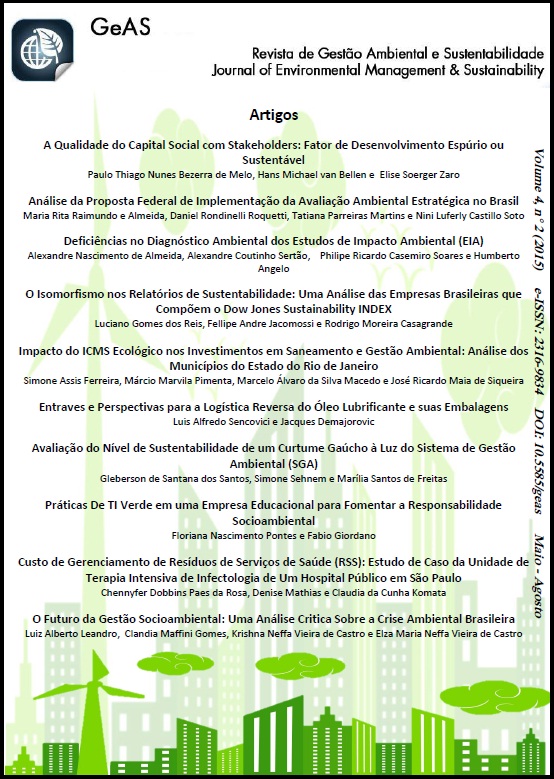Weak Spots in The Environmental Diagnostic of the Environmental Impact Statement- EISs
DOI:
https://doi.org/10.5585/geas.v4i2.168Keywords:
Environmental impact assessment, environmental diagnostic, environmental permit, environmental management, environmental impact reportAbstract
Environmental studies in Brazil are required to obtain a license to perform activities that use environmental resources or have the potential to cause environmental degradation, but the quality and effectiveness of these studies have been widely questioned. It is the licensing body’s duty to define the technical studies required for licensing. However, in the case of enterprises that have the potential to cause significant degradation, Environmental Impact Statement (EIS) and Environmental Impact Report (EIR) must always be requested. The EIS/EIR is composed of several parts, among them standing out the environmental diagnostic, which it is the major part of the environmental studies and is the part that demands more resources to be carried out; in addition, its information subsidizes the later stages: prediction and assessment of environmental impacts, mitigation measures, compensatory and monitoring plans.The aim of this study was to analyze the problems usually present in the environmental assessment of the environmental impact studies as the perception of IBAMA environmental analyst. Data collection for this research was done through the application of an electronic questionnaire to IBAMA environmental analysts, achieving a sample of 74 questionnaires from a population of 354 analysts. As methodological basis, cluster analysis and the nonparametric Mann-Whitney test were applied. The results indicated that the problems related to coordination of EIAs are critical and they seem to last for at least a decade according to the articles identified.










